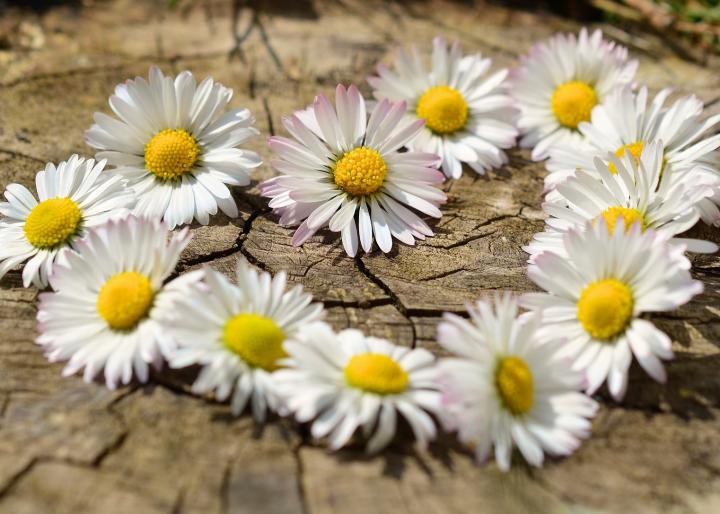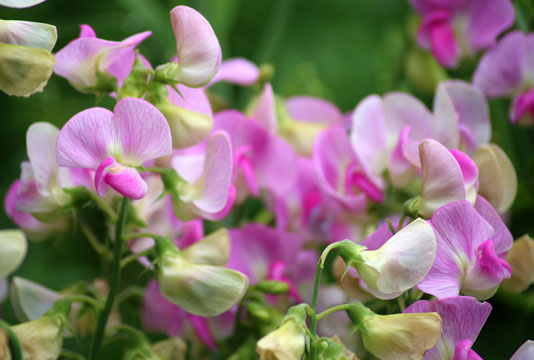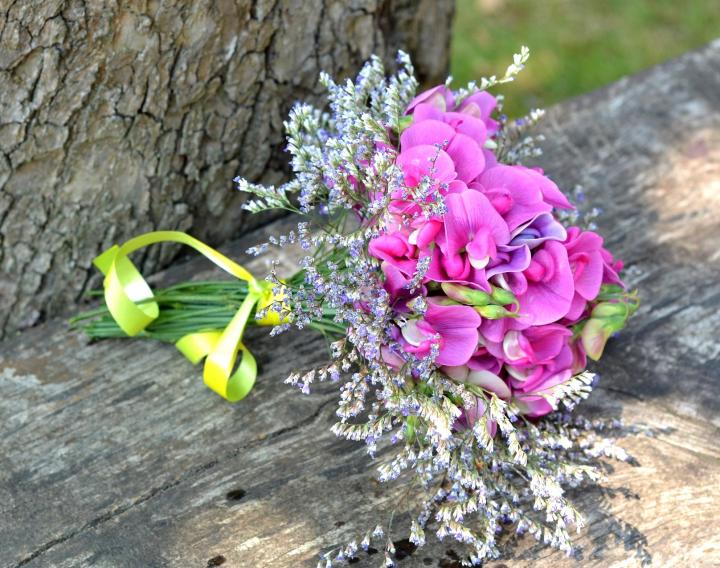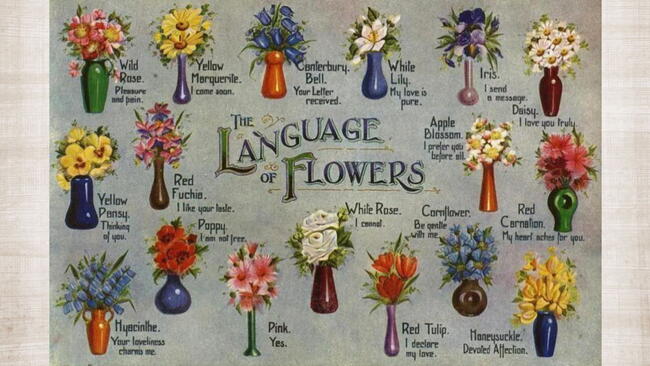By April, spring is officially here, and gardens are (or soon will be) bursting with color from the earliest blooming flowers! For those born in April, daisies and sweet peas have special meaning, as the two have long been recognized as the April birth flowers. Whether they’re your “birth” flower or not, learn more about the history, meanings, and symbolism of the daisy and sweet pea!
What Are the April Birth Flowers?
The April birth month flowers are the daisy and the sweet pea. The daisy stands for innocence, purity, and true love, while the sweet pea is a way to say goodbye, send good wishes, or merely convey a thank you.
The Daisy
Stemming from Old English, the daisy comes from “day’s eye,” referencing the daily habits of the English daisy, with its petals opening in the day and closing at night. Depending on the species, the daisy can be one of your earliest spring bloomers or among the last to appear in the fall.
The daisy is actually made up of two flowers. The center eye—or disc floret—is a collection of tiny florets, while the ray floret (the petals) radiate from the center, resembling the Sun. Because a daisy is made up of two flowers that work in perfect harmony, they have long been a symbol of true love.
Native to Europe and Africa and eventually naturalized in North America, daisies belong to the aster family (Asteraceae). This is one of the largest plant families, which also includes sunflowers and, of course, asters.
See how to plant and grow sweet daisies!

Daisy Meanings and Symbolism
- The daisy has long represented innocence, purity, and true love.
- Each color daisy represents something different. The white daisy symbolizes purity and innocence; yellow means joy and friendship; pink represents affection; and red symbolizes love and romance.
- According to an old Celtic legend, when an infant or child died, the gods would cover the child’s grave with daisies to cheer up the parents.
- In Norse mythology, the daisy is the sacred flower of Freyja, the goddess of love, beauty, and fertility. In turn, the daisy became a symbol of motherhood and childbirth, and of new beginnings. Daisies are a common gift for new mothers.
- A Roman myth attributes the creation of the daisy to the nymph Belides, who turned herself into a daisy to escape the affection of Vertumnus, the god of gardens and seasons. The Latin word for Daisy, bellis, is derived from the nymph’s name.
- It was once thought that a daisy in a bouquet was a sign of one’s ability to keep a secret.
- “Daisy” has been used in many phrases over time. “Fresh as a daisy” means someone has had a good night’s rest; “oopsy daisy” or “whoops-a-daisy” is said after a mistake or blunder.
- Daisies have been linked to the Virgin Mary because they represent love, innocence, and new beginnings.
- The daisy is a flower given between friends to emphasize the keeping of a secret; the daisy means “I’ll never tell!”
The Daisy in History
The daisy family, also known by its scientific name, Compositae, was classified by the German botanist Paul Dietrich Giseke in the late 1700s. However, records of daisies date back to 2,200 B.C., when it is believed they were grown in Egyptian gardens and used for medicinal purposes.
Daisies have long been associated with medicine. Teas made from daisies are used to treat coughs, bronchitis, and inflammation; wild daisies have been applied to the skin to treat wounds or disease; and King Henry VIII, it has been said, ate daisies to help stomach ulcers.
Daisies in the Garden
Daisies can commonly be found growing in cultivated gardens, in lawns and meadows, and along roads. Some species are known to be weeds, so plant with care. The most common garden daisies are the Ox eye, Shasta, Gerbera, and English.
Daisy seeds can be started in the spring, indoors, 6 to 8 weeks before the last frost, or outdoors after the last frost. Plants grown from seed won’t bloom until the following season.
→ To learn more about growing daisies, visit our Shasta Daisies Growing Guide.

The Sweet Pea
The sweet pea (Lathyrus odoratus) is part of the Fabaceae family and is related to beans and other legumes. While it is not a crop pea, it is a close relative. Due to its similar look, it’s also commonly confused with the Everlasting Pea. While sweet pea has been used in some areas of the world for medicine and food, unlike its edible garden pea relatives, it is considered toxic to humans and animals.
Native to Italy and the Mediterranean region, sweet peas are beautiful and have a sweet fragrance—often likened to oranges, honey, and jasmine—that can brighten any room.
They are found in a wide range of colors, with hundreds of varieties having been developed over time, and bloom from spring to early summer, depending on the planting region.
Sweet Pea Meanings and Symbolism
- In the language of flowers, a bouquet of sweet peas is a way to say goodbye or thank you for a lovely time. It can also mean blissful pleasure, good wishes, kindness, gratitude, and friendship.
- Some English gardeners call them the “Queen of the Annuals.”
- In France, the flower has long been a traditional gift for brides, providing good luck on her wedding day and in the marriage.
- At one point, it was worn for strength or to reveal the truth. Sweet peas were also worn in pockets to provide a fragrance to clothing.
- In some cultures, the sweet pea was thought to have magical properties.
Sweet Peas in History
Sweet peas were discovered in southern Italy in the late 1600s by Francis Cupani, a Sicilian monk. Cupani is said to have sent seeds from the sweet pea to Dr. Casper Commelin, a botanist in Amsterdam, and Dr. Robert Uvedale, a teacher and plant enthusiast in England, which began its spread around Europe.
In the 1800s, Henry Eckard, a Scottish nursery proprietor, began creating larger, more beautiful, and more colorful sweet pea hybrids. The rest is history!
Sweet Peas in the Garden
Sweet peas are an annual that prefers full sun and well-draining, rich, organic soil. Depending on the variety, they are climbers that grow from 6 to 10 feet tall. Make sure to give them good support using a trellis, arch, or fence.
In locations where frosts are more regular, plant in the very late winter or early spring when the soil is dry enough to work in. Flowers bloom in the spring, and the plant does not thrive in heat. Seeds can be started indoors before transplanting outside.
→ Learn more about growing the charming, fragrant sweet pea!

Learn More













Comments